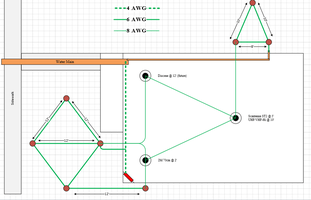- Joined
- May 22, 2015
- Messages
- 1,717
- Likes
- 2,150
Keep in mind that I am not doing any grounding for RF at this point.
Looking to put three masts up on the roof (RX, TX, and future RX/TX) and want to make sure that, from a safety perspective, I'm on the right track. Talked to a couple of electricians and they were all about not connecting antenna ground to service ground. Everything I can read on the interwebs says that they should be connected...
Any thoughts on this preliminary plan? It may be overkill but that's what I'm looking for.
Looking to put three masts up on the roof (RX, TX, and future RX/TX) and want to make sure that, from a safety perspective, I'm on the right track. Talked to a couple of electricians and they were all about not connecting antenna ground to service ground. Everything I can read on the interwebs says that they should be connected...
Any thoughts on this preliminary plan? It may be overkill but that's what I'm looking for.


![Shocked [shocked] [shocked]](/xen/styles/default/xenforo/smilies.vb/007.gif)
![Laugh [laugh] [laugh]](/xen/styles/default/xenforo/smilies.vb/012.gif) 83-1SPs only please.
83-1SPs only please.